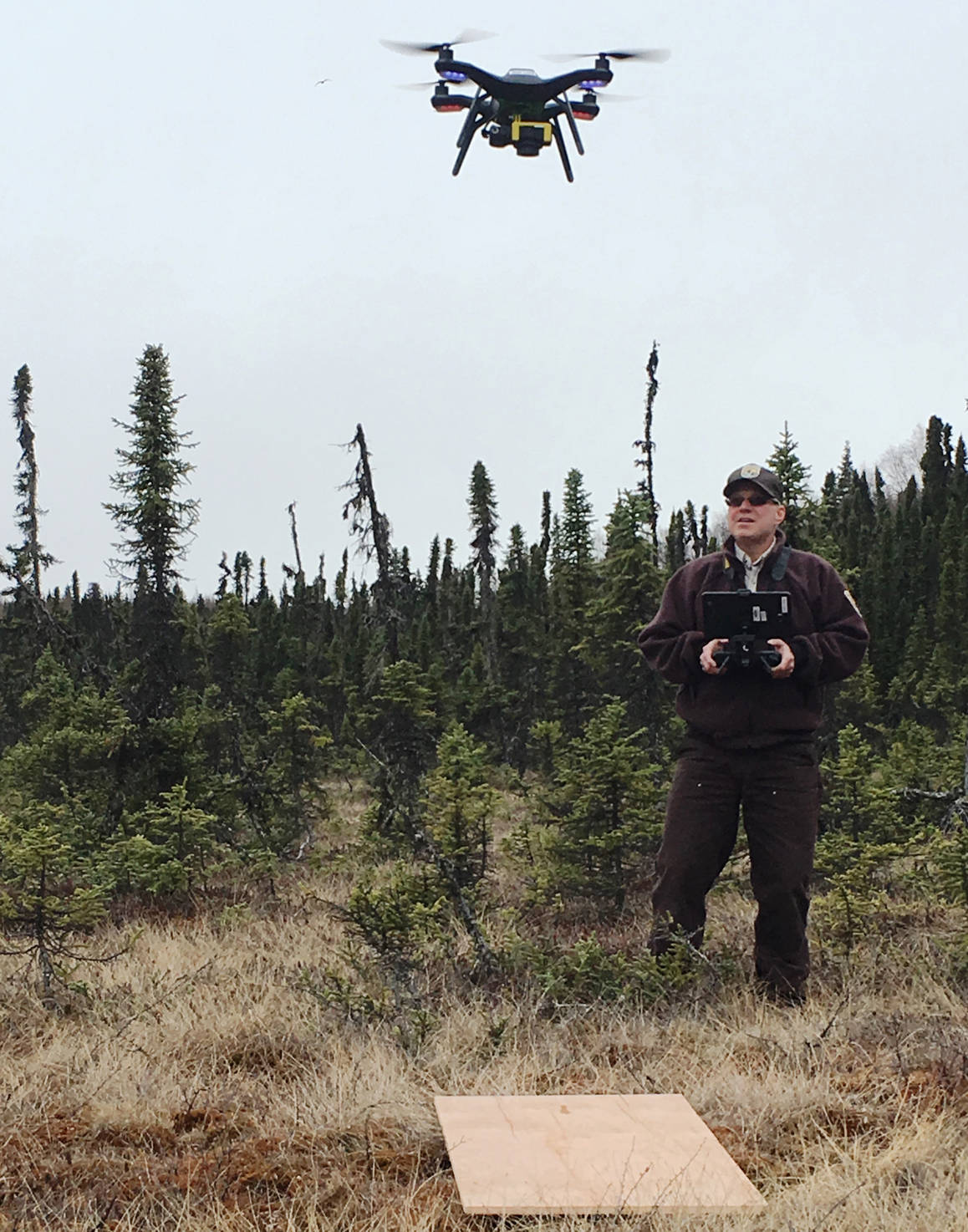On the Kenai National Wildlife Refuge near Headquarters Lake is a small colony of Aleutian Terns that nest alongside Arctic Terns. Aleutian Terns breed in small colonies along the Alaska coast and in the Russian Far East. Unlike the Arctic Tern and other more abundant seabirds, very little is known about the Aleutian Tern.
Heather Renner from Alaska Maritime National Wildlife Refuge, coauthored a paper in 2015 on the breeding distribution and population trends of Aleutian Terns. In brief, by analyzing surveys conducted since 1960, the Alaska population of Aleutian Terns has declined by an alarming 93 percent. No single factor was identified for this decline. Due to the limited knowledge of this species, there was a general call for increased surveys of known colonies.
With this in mind, my colleagues Dawn Magness and Todd Eskelin approached me about the feasibility of conducting surveys of our Aleutian Tern colony using drones. Over the past several years Kenai Refuge staff have been active in developing low cost aerial photography systems based from helicopter and fixed wing platforms. We have been very successful in creating large landscape-scale photo mosaics and surface elevation models that cost only pennies per acre.
However, for some projects, the use of manned aircraft would be costly, too low in resolution, negatively impact wildlife, or expose personnel to unnecessary risk. One solution we started to investigate two years ago was small Unmanned Aerial Systems (sUAS), also known as drones. At that time, Department of Interior policy on UAS was still being developed, so we had to put those plans on hold. But, long story short, after several licenses, certifications, and training classes these past few years, I was finally given the authority to operate an sUAS.
Typically bird colonies are surveyed by foot, but this method has some dire consequences for Aleutian Terns. In the case of Arctic Terns and some other marine birds, if you approach the colony, they will start dive bombing you to protect their young. If threatened, Aleutian Terns will not defend the nest, but may abandon it.
The prospect of remotely photographing birds in the colony was tantalizing, but many challenges exist. The drone we have is a small quadcopter (3DR Solo), with a payload capacity of about 1 pound. At an altitude of 100 feet, the camera records at a resolution of less than 1/3 inch. To fly the drone in the precise grid required, an application called Tower is used as an autopilot. Using modern photogrammetry software, I can stitch or mosaic multiple individual images to create a single image called an orthomosaic.
One question we wanted to answer prior to the arrival of the terns is how high can we fly and still be able to discern between Arctic and Aleutian Terns. Using a variety of decoys, we took photos at different altitudes, camera settings, and lighting conditions. We are cautiously optimistic that at an altitude of 75-100 hundred feet will allow us to discriminate Aleutian Terns.
The next and probably most important question is whether or not the drone will disturb the nesting terns. Our plan is to fly a series of desensitization flights at altitudes starting at 300 feet and work our way closer to the ground. We will have an observer hidden in a blind to watch the birds’ response. Birds remain on the nest when they start incubating, so we should be able to track nesting success. To further test our ability to detect nesting birds, we plan to equip the drone with a thermal camera, which should help us find birds hidden by grass.
As an FAA-licensed UAS operator for the U.S. Fish and Wildlife Service, it’s easier for me to remember the small handful of can-do’s rather than the extensive list of don’t-do’s. One of the greatest hazards of flying a UAS is the chance of a midair collision with another aircraft. It is the responsibility of the UAS operator not to interfere with manned aircraft. As a precaution, due to our proximity to the Soldotna Airport, I file a notice with the local Flight Services before any operation to alert pilots of our activities. Additional observers also assist me to keep an eye out for other aircraft. The FAA has several online resources and a phone app (B4UFLY) to assist drone operators to fly their aircraft safely and responsibly.
As a cautionary note, the recreational use of UAS or drone is prohibited on the Kenai Refuge (and the majority of Alaska public lands).
Watch for subsequent Refuge Notebook articles about our success (or not) with monitoring our local tern colony!
Mark Laker is an Ecologist with the Kenai National Wildlife Refuge. Find more information about the Refuge at http://www.fws.gov/refuge/kenai/ orhttp://www.facebook.com/kenainationalwildliferefuge.

